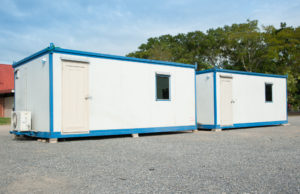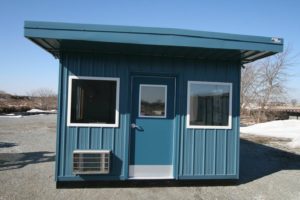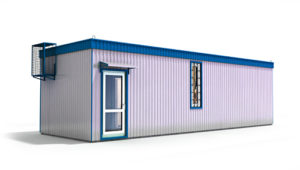
Comparing Costs: The Economic Benefits of Portable Metal Buildings vs. Traditional Structures
With the increasing demand for flexible, economical, and sustainable building solutions, the construction industry has seen a significant shift in preference from traditional structures to portable metal buildings. For companies seeking cost-effective solutions without compromising on quality or functionality, these prefabricated metal structures offer a compelling choice. But just how economical are they compared to traditional buildings? Let’s delve into the cost comparison and economic benefits of portable metal buildings over their conventional counterparts.

Initial Construction Costs
Traditional Buildings
Traditional structures often involve high initial costs. Construction begins from the ground up, requiring a considerable amount of raw materials like concrete, wood, brick, or steel. Labor costs are also significant, given the extensive man-hours required for construction. Further, traditional buildings need considerable site preparation, including excavation and foundation construction, which adds to the overall expense.
Portable Metal Buildings
In contrast, portable metal buildings are prefabricated off-site and then transported to the required location. As a result, they come with lower initial construction costs. The production process is streamlined, involves less labor, and the materials used are optimized to reduce waste. Moreover, these structures usually require minimal site preparation, offering significant savings.
Operational Costs
Traditional Buildings
Traditional structures tend to have higher operational costs. This is largely due to the need for regular maintenance to prevent decay, address weathering, and repair damage. Energy costs can also be high due to less efficient insulation and temperature control.
Portable Metal Buildings
Portable metal buildings, on the other hand, typically have lower operational costs. They are designed to be durable, requiring less maintenance over time. The structures are often made with energy-efficient materials, reducing heating and cooling costs. Moreover, these structures can be easily modified or expanded, providing flexibility at a lower cost compared to traditional buildings.

Longevity and Depreciation
Traditional Buildings
While traditional buildings can last for many decades, their value depreciates over time due to wear and tear. The costs associated with regular refurbishment and repair can be substantial.
Portable Metal Buildings
Portable metal buildings are constructed with high-quality steel, known for its durability and resistance to environmental conditions. This results in a longer lifespan with less depreciation, reducing long-term costs. They also retain their value well, as they can be relocated or repurposed with relative ease.

Time Efficiency
Traditional Buildings
Building traditionally is a lengthy process. Weather conditions, supply chain issues, or labor shortages can significantly delay the project, leading to indirect economic losses.
Portable Metal Buildings
With portable metal buildings, construction time is drastically reduced. Since the majority of the building process takes place in a controlled factory environment, weather or labor issues rarely cause delays. This means that your building can be operational sooner, bringing forward the realization of economic benefits.

Sustainability
Traditional Buildings
Traditional building methods can have a larger environmental footprint due to wastage of materials, extended construction times, and energy inefficiency. The economic cost of this impact can be significant, particularly under increasing regulatory scrutiny and the social push towards sustainability.
Portable Metal Buildings
In terms of sustainability, portable metal buildings have an advantage. Their production process is designed to minimize waste, and the buildings themselves are often more energy-efficient. In addition, the steel used in construction is typically recyclable, contributing to a circular economy and potentially resulting in lower regulatory and compliance costs.
In conclusion, while both portable metal buildings and traditional structures have their merits, the former provides significant economic benefits. They offer lower initial construction and operational costs, increased longevity with less depreciation, time efficiency, and better sustainability credentials. Through companies like MetalPortableBuildings.com, businesses can connect with suppliers to explore these cost-effective, flexible, and environmentally-friendly building solutions.
Cost Analysis: Renting, Leasing, and Buying Portable Metal Buildings
The overall value that portable metal buildings provide can be further understood by looking into the costs associated with renting, leasing, or buying these structures. It’s essential to make an informed decision based on your business’s unique needs, budget, and long-term plans.

Renting a Portable Metal Building
Renting a portable metal building is a cost-effective option for businesses requiring a temporary space solution. The rental cost typically depends on the building’s size, features, and the rental duration. Monthly rental rates can range from a few hundred to a few thousand dollars.
It’s also important to consider the delivery and setup costs, which vary based on the location and complexity of installation. Renting gives you the advantage of short-term commitment, minimal maintenance responsibility, and the ability to return the building once it’s no longer needed. However, over an extended period, rental costs can add up and eventually exceed the price of buying.

Leasing a Portable Metal Building
Leasing is another viable option for companies that need a portable metal building for an extended period but may not have the capital to purchase outright. Lease agreements generally have longer terms than rental contracts, and monthly lease payments may be lower than rental rates.
The costs of leasing depend on several factors, including the building’s size, lease term, and the leasing company’s rates. There may also be initial setup and delivery fees. While leasing involves a longer-term commitment than renting, it also gives you the option to buy the building at the end of the lease term. Plus, lease payments can often be deducted as a business expense, providing tax benefits.

Buying a Portable Metal Building
For businesses seeking a long-term solution, buying a portable metal building might be the most cost-effective option. The cost to purchase a portable metal building varies greatly based on its size, customizations, and the materials used. A small, basic portable metal building could cost as little as $1,000, while larger, more elaborate structures could cost $100,000 or more.
Although the initial investment is higher, owning the building gives you complete control over it, without concerns about lease terms or recurring rental fees. Owning also means the building can be considered a business asset, which can be beneficial for your company’s valuation.
It’s worth mentioning that whether you rent, lease, or buy, additional costs may include site preparation, utility connections, and potential permits, which depend on your local regulations.
The choice between renting, leasing, or buying a portable metal building largely depends on your business’s specific needs and financial situation. Each option has its pros and cons in terms of cost, flexibility, and commitment. Through MetalPortableBuildings.com, you can get competitive quotes from various suppliers and make an informed decision that brings the most economic benefit to your company.


